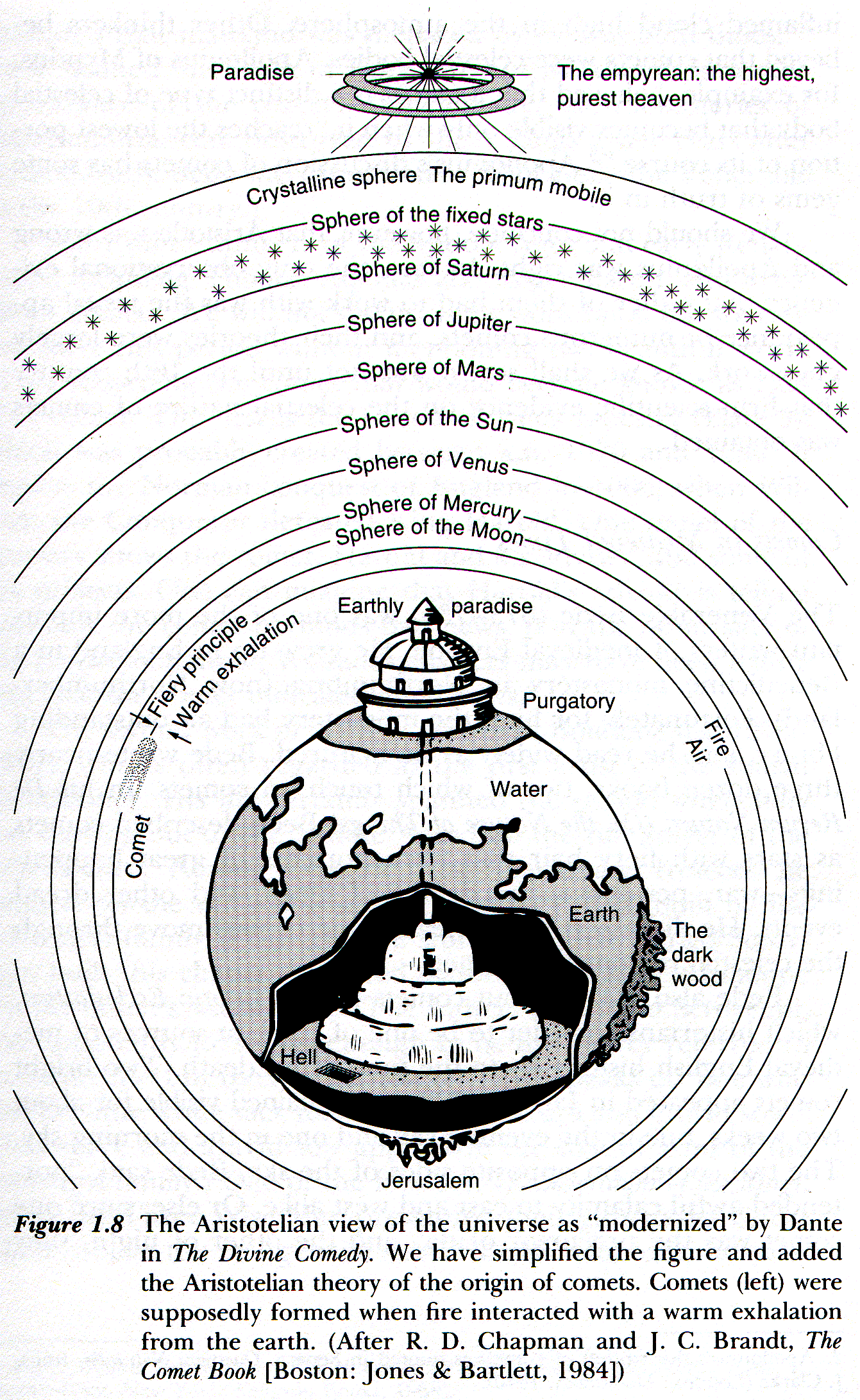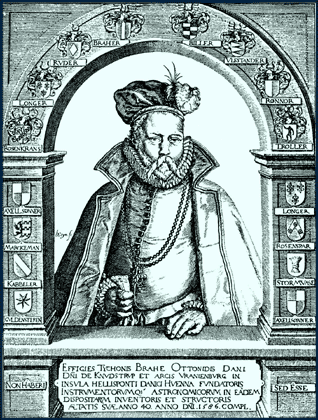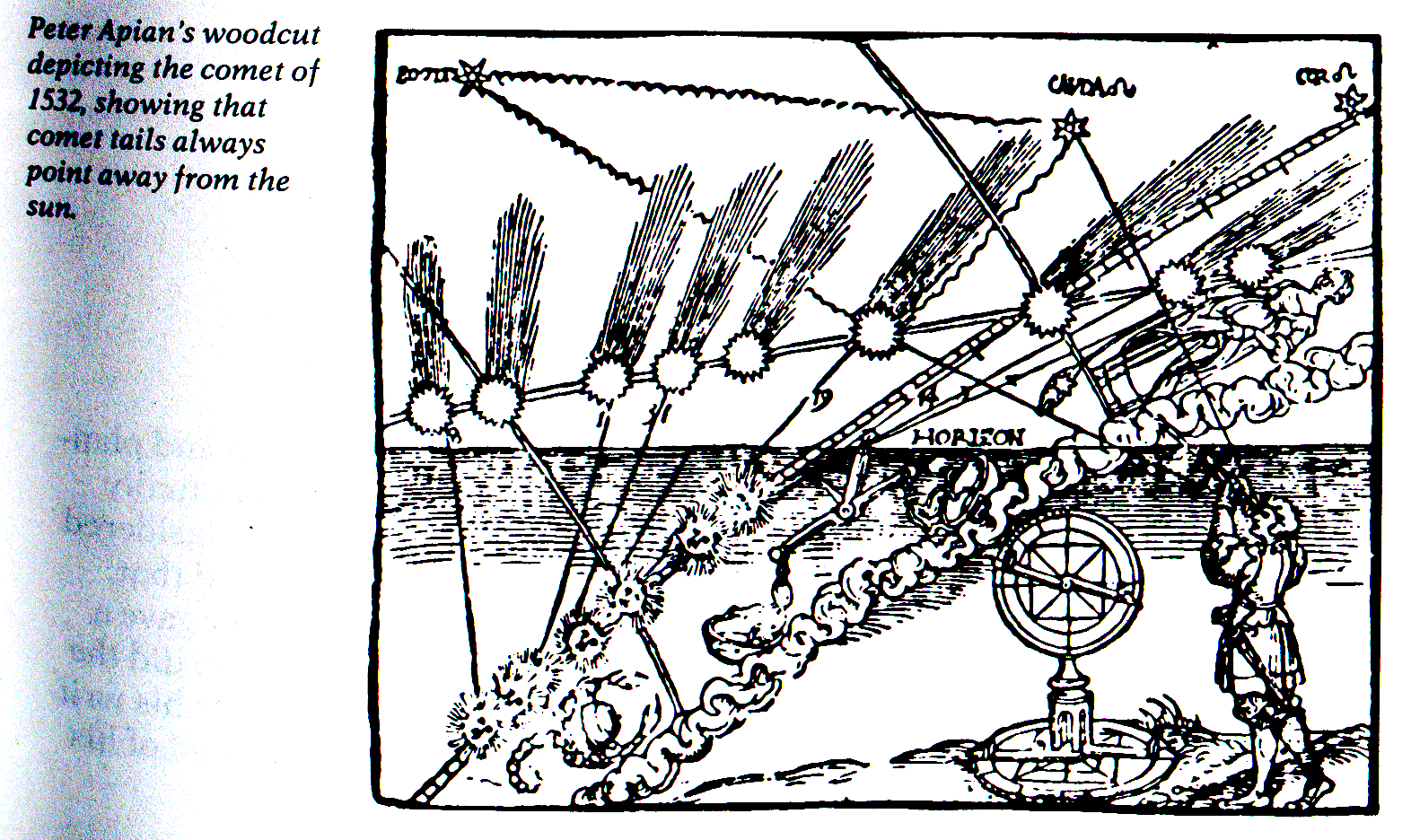 (Chapman,
p.15)
Compared to present-day representation
of comets as astrological balls of ice, historically comets have been portenders
of pestilence, famine, and the death of notables in European countries.
According to Grecian writers Egyptians were the first to suggest that spectacular
comets were long flowing tresses of women’s hair. Most written references
of cometary influences start during the Greco-Roman era.
(Chapman,
p.15)
Compared to present-day representation
of comets as astrological balls of ice, historically comets have been portenders
of pestilence, famine, and the death of notables in European countries.
According to Grecian writers Egyptians were the first to suggest that spectacular
comets were long flowing tresses of women’s hair. Most written references
of cometary influences start during the Greco-Roman era.
“ A comet is a particularly frightful
body, and not easily atoned, it is usually a very fearful star and announces
no small effusion of blood” (Pliny, Historia Naturalis, 77 A.D.)
In 1528 a comet graced the skies of Europe. Crowds aggregated in
the streets for mass prayers and redemption. According to many, it
wasn’t until the Pope of the time beseeched God that the comet was exorcised
from the sky.
In 1531, Peter Apian noticed
tails of all comets pointed away from the sun. It was a fact that
Chinese astronomers had recorded in writing in 800 A.D. Tycho Brahe
became interested in comets due to their seemingly short-term nature.
He carefully observed the comet of 1577 . Not only did he confirmed
that comets are true astronomical bodies, but that they orbit the Sun external
to Venus. After his death, Brahe’s assistant Kepler studied his predecessor’s
notes. During his own studies of comets in 1607 and 1618, he noticed
that all comets traversed the Solar System in a rectilinear orbit, or in
other words, they moved in a strait line. The other conclusion was
that comets were extremely numerous in space.


 (
(
Tycho
Brahe, courtesy of http://www.hven.com/AIM1.html
Johanne Kepler, courtesy of http://www-groups.dcs.st-and.ac.uk/~history/Mathematicians/Kepler.html
Whipple, p. 17)
Galileo on the other hand argued with
a Jesuit by the name of Grassi, who relied on Brahe’s theories. He
stated that Grassi’s theories were false because there was no proof.
Even though Grassi’s arguments were more physically sound, Galileo won
the debates with his rhetorical supiority.
The comet of 1680 produced new cometary
thoughts. Comet orbits were agreed upon. Newton developed a
technique to determine the parabolic orbit of a comet through three observations.
Later Halley used Newton’s method to discover the first periodic comet
which still bears his name. Frederick Bessel studied the sunward
jets in the nineteenth century and the first meteor shower was identified
with a parent comet in 1867.
Presently, while the presence of comets
are being answered, they are still beautiful and mysterious.
A Few of the Famous Events that Comets were Precursor and After Events
To
43 B.C. : Julius Caesar was transported to the
Heavens by a comet
451 A.D. : Attila’s death was pronounced
455 A.D. : Emperor Valentinian’s death
841 A.D. : Charlemagne’s death
1000 A.D.: Prodegy of doom, mass hysteria
1066 A.D.: Precursor to the Norman conquest
1456 A.D.: Turks vs. Delgrade
1499 A.D.: Precursor to Cortez’s arrival in Mexico

 (
(